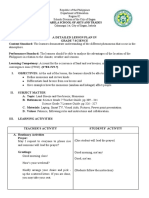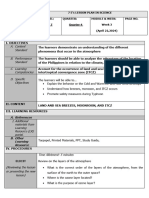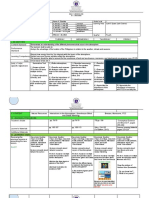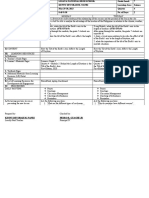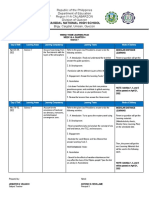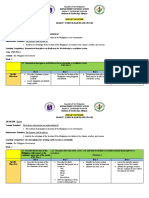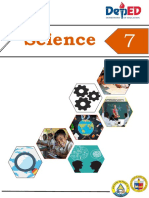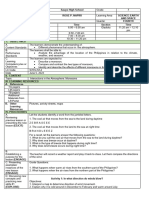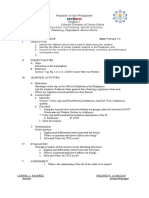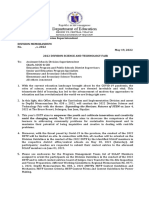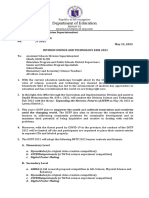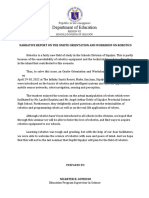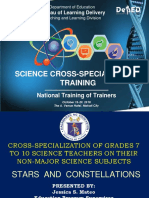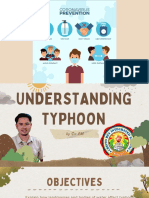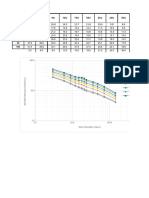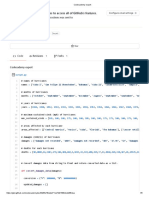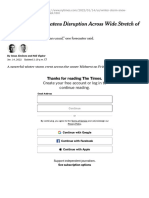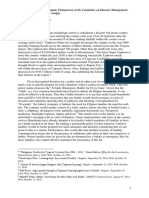Republic of the Philippines
Department of Education
REGION VII – CENTRAL VISAYAS
SCHOOLS DIVISION OF SIQUIJOR
LESSON PLAN
Name of Teacher: Name of Teacher: __________________ Quarter: 4TH
Subject and Grade Level: SCIENCE 7 Week: 3
No. of Hours: 2 hours
Most Essential Learning Competency (MELC): Account for the occurrence of land
and sea breezes, monsoons, and inter tropical convergence zone. S7ES-IVf-8.
I. Objectives: (Cognitive, Affective, Psychomotor)
At the end of the lesson, the learner will be able to:
A. Define sea and land breeze
B. Recognize the importance of the local winds in real-life situations.
C. Determine the direction of wind movement during different seasons in the
Philippines using a map.
II. Subject Matter:
A. Topic/Lesson: Atmospheric Phenomena
B. Topics Reference: Science 7 Self-Learning Module (SLM) 4 for Quarter 4, pages
1-12
C. Materials/Equipment: SLM’s, television set
III. Procedure:
A. Review:
The students will rearrange the jumbled letters in every item to form the
correct word being described by the group of words at the right.
ORTNDAO – violent whirl wind
MTOSRDNUEHRT- storm with thunder and lightning
PONOHTY- tropical cyclone in the eastern hemisphere
HINAAM- northeast monsoon
SNONOMO-caused by differences on air temperature and air pressure
BGAHATA-southwest monsoon
B. Motivation:
The students will answer the questions based on the diagram below.
1. What provides energy (as heat) to the sea and land?
2. Which has the better ability to absorb energy as heat and retain that heat?
� 3. In your own words, describe the movement of air that creates a land breeze
and a sea breeze.
4. Why does hot air or hot liquid rise?
https://www.pinterst.ph
C. Presentation:
The teacher will let the students read What is it on pages 7 and 8 of Module 1.
D. Analysis/Discussion:
1. The teacher will ask the students the following questions:
a. As warm air rises, what happens to the air in the surroundings?
b. Do land and water absorb heat from the Sun in the same way? Or is
there a difference?
c. What will happen at night, when the Sun is gone?
2. The students will accomplish Independent Activity and Independent
Assessment under What’s More on pages 7-8 of Science 7, Module 4 for
Q4.
E. Abstraction/Generalization:
1. How is Global atmospheric phenomena the same with greenhouse effect
and global warming?
� 2. What happened to air when it’s heated?
F. Application:
The students will answer the following questions.
1. Why do farmers welcome the monsoons?
2. Why are fisher folks not so happy about the monsoons?
3. Why do energy providers appreciate the monsoons?
IV. Evaluation:
The students will accomplish the Post-Test under Assessment on pages 9-11 of Module
4.
V. Assignment:
The students will answer the following questions.
1. Why is it necessary to read or watch news reports regarding a location's weather?
2. What significance does it have in the Philippines to record the weather each day?
3. Why is forecasting the weather important?
Prepared by:
Jinky H. Duhaylungsod














